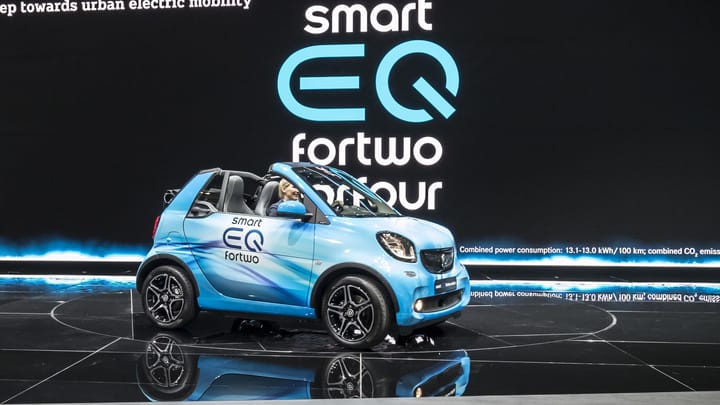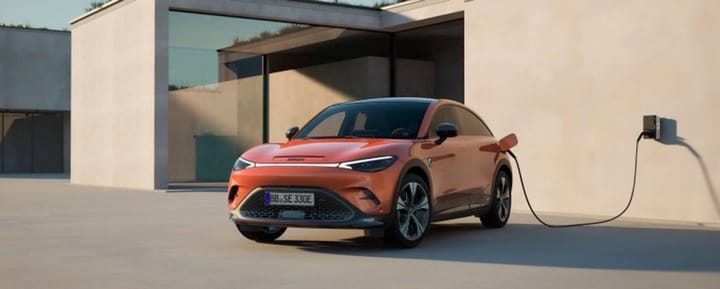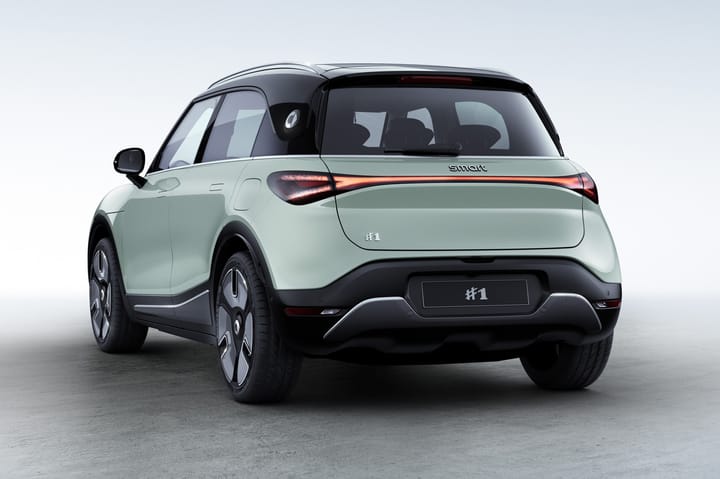Table Of Contents
Understanding SMART Criteria in Lease Management
Strategies for Lease End Management
Technology's Role in Enhancing Lease End Experience
Planning for the Next Steps Post-Lease
FAQ
As the end of a lease approaches, lessees and lessors alike face critical decisions that can significantly impact their financial and operational future. This comprehensive guide delves into the SMART criteria for lease management, offering a structured approach to lease end processes, and explores various strategies for managing the conclusion of a lease effectively. From understanding the technological advancements that enhance the lease end experience to planning future transportation needs, this article provides valuable insights for navigating the complexities of lease conclusion.
TLDR
- Implementing SMART criteria can streamline lease end processes and set clear goals.
- Assessing wear and tear and understanding end-of-lease costs are crucial for financial planning.
- Digital tools and smart solutions are transforming the lease management landscape.
- Future transportation choices should consider environmental impact and technological advancements.
Enhancing Lease End Choices with Renewable Energy and Blockchain Technology
As the automotive industry evolves, integrating renewable energy sources into electric vehicle (EV) charging infrastructure and leveraging advancements in blockchain technology are becoming pivotal in enhancing the environmental and operational benefits of vehicle leasing. These innovations not only contribute to a more sustainable future but also offer a transparent and trustworthy leasing process.
Integrating renewable energy sources, such as solar and wind power, into EV charging stations can significantly reduce the carbon footprint associated with electric vehicles. This approach not only aligns with global efforts to combat climate change but also ensures that the environmental benefits of choosing an EV at the end of a lease are maximized. For instance, utilizing solar power for EV charging can lower operational costs and reduce reliance on traditional electricity sources, further promoting sustainability (Energy5, UtilitiesOne).
On the technological front, blockchain technology offers a revolutionary way to improve transparency and trust in the vehicle leasing process. By creating a tamper-proof history of each vehicle, including detailed maintenance logs and ownership records, blockchain technology ensures accurate valuations and simplifies the transfer of ownership. This not only mitigates odometer fraud but also provides an unalterable record of the vehicle's condition at lease end, fostering trust between lessees and lessors (LinkedIn, EOS Intelligence).
"By leveraging blockchain technology, the vehicle leasing process becomes more transparent, allowing for a seamless verification of the vehicle's condition at lease end, thus building trust between all parties involved." - Silverstone Leasing
In conclusion, the integration of renewable energy sources into EV charging and the application of blockchain technology in vehicle leasing are not just trends but essential steps towards a more sustainable and trustworthy automotive future. These advancements not only enhance the lease end experience but also pave the way for smarter, cleaner, and more efficient transportation choices.
Understanding SMART Criteria in Lease Management
Overview of SMART Criteria
Key Elements of SMART Criteria for Lease Management
As your smart-3 lease winds down, leaning on the SMART criteria can really smooth out the lease management process. This approach makes sure your lease management goals are Specific, Measurable, Assignable, Realistic, and Time-bound. Here's the breakdown for lease management:
-
Specific: Nail down exactly what you want to achieve as your lease ends. Maybe it's getting ready for that lease return inspection, figuring out wear and tear policies, or looking into lease buyout options.
-
Measurable: Have clear targets like specific dates for inspections or setting a budget for end-of-lease expenses.
-
Assignable: Figure out who's doing what. If you're working with a leasing company, know what they'll take care of and what's on your plate.
-
Realistic: Make sure your goals are doable, considering your car's condition, your finances, and your timeline.
-
Time-bound: Set a solid timeline for wrapping up your lease, including making decisions on returning, buying out, or extending the lease.
Sticking to these criteria helps you manage your lease's end smoothly, dodging any last-minute hassles or costs. For a deeper dive into SMART criteria, check out Wikipedia.
Implementing SMART Criteria in Lease End Processes
Steps for Setting SMART Goals for Lease Conclusion
As your lease's end approaches, setting SMART goals can really help keep things on track for a hassle-free transition. Here's how to apply SMART to your lease-end game plan:
-
Specific: Pin down what needs to get done before the lease is up. This might mean scheduling a vehicle inspection, taking care of repairs, and understanding lease return policies. Being specific helps zero in on what's important.
-
Measurable: Aim for measurable objectives, like getting repair estimates or booking inspections by a certain date. This lets you track your progress and make sure you're hitting the marks for a successful lease wrap-up.
-
Assignable: Decide who's responsible for what. If there are repairs needed, figure out if it's you or the dealership handling them. Assigning tasks keeps everyone accountable and helps avoid surprises.
-
Realistic: Keep it real with what you can achieve, given your time and budget. If big repairs are on the horizon, it might be smarter to chat with your leasing company about options.
-
Time-bound: Have clear deadlines for each task. Deadlines prevent a last-minute rush and ensure everything's squared away for the lease return.
Applying SMART to your lease-end strategy organizes and eases the process, making your current lease conclusion smooth and setting a solid foundation for any future leases.
Effectiveness and Impact on Lease Management
Case Studies and Real-World Applications
Wrapping up a smart-3 lease, it's key to see how effective lease management strategies can be. The SMART criteria, known for making goal setting clear and achievable, fits right into lease management for a smooth end-of-lease transition. For example, a study by Michigan State University Extension showed folks using SMART had a 76% success rate in hitting their goals, way ahead of the 43% success rate for those not using SMART (source).
In lease management, SMART helps lessees and lessors set clear expectations, measurable outcomes, and a solid timeline for wrapping things up. This approach not only improves communication but also keeps everyone on the same page, cutting down on conflicts and mix-ups.
| Aspect | Without SMART Criteria | With SMART Criteria |
|---|---|---|
| Success Rate | 43% | 76% |
| Communication | Could be hit or miss | Clear, reducing mix-ups |
| Expectations | Might be all over the place | Clearly defined |
Using SMART for lease management benefits everyone involved, making the end-of-lease process smoother, saving time, and avoiding headaches.
Strategies for Lease End Management
Wrapping Up Your Lease
Checking Out the Fine Print
So, your smart-3 lease is almost up. First thing's first, dig out that lease agreement and give it a good once-over. It's got all the nitty-gritty on what they'll ding you for at the end, like those pesky fees for extra wear and tear or if you've been a bit too road-happy and blasted past your mileage limit. Knowing this stuff inside out means no ugly surprises with extra charges.
Wear and Tear: What's the Deal?
Every car gets a bit worn with time – it's expected. But there's "normal" wear and tear, and then there's "oops, that's gonna cost me." Take a good look at your ride and stack it up against what your lease says is acceptable. Got some oopsies? Might be worth fixing them up before the lease inspector comes knocking, so you're not hit with extra fees. Your lease agreement is your best friend here, spelling out exactly what counts as too much wear and tear.
What's Next? Lease End Options
To Renew, Return, or Buy, That is the Question
Alright, decision time. Your lease's up, and you've got three paths you can take: renew it, return the car, or buy it outright. Here's a quick breakdown to help you figure out what's best for you:
| Option | Advantages | Considerations |
|---|---|---|
| Lease Renewal | Snag a newer model with all the bells and whistles. | Might mean a bump in your monthly payments. |
| Return | Walk away free and clear, ready to find your next ride. | Watch out for those end-of-lease fees for wear, tear, and extra miles. |
| Buyout | The car's all yours, no more rules. | Coming up with the cash or financing the buyout can hit the wallet hard. |
What's best hinges on your situation – your budget, how much you drive, and whether you're still smitten with your car. If you're all about the latest and greatest, renewing could be your jam. If you're itching for a change or don't want to be tied down, returning it could be a breath of fresh air. And if you can't bear to part with your ride, buying it might just be your happy ending.
The Money Talk
Brace Yourself for End-of-Lease Costs
As the curtain falls on your smart-3 lease, don't get caught off guard by the final act's costs. Here's the lowdown:
- Excess Mileage Charges: Gone over your mileage limit? That's gonna cost you, usually per extra mile.
- Wear and Tear: A bit of wear is one thing, but major damage or neglect could see you forking out for repairs.
- Disposition Fee: Some leasing companies charge this to spruce up the car for its next adventure.
- Purchase Option: Thinking of buying your car? Make sure you know the buyout price and any extra fees.
Best bet? Go through your lease agreement and have a chat with your leasing company ahead of time. This way, you can budget better and figure out if you're gonna renew, return, or buy your way to a happy ending with your car.
Technology's Role in Enhancing Lease End Experience
Navigating Lease Management with Digital Tools
Simplifying Lease Review and Management Online
In today's world, managing a smart-3 lease is a breeze with digital tools. Online portals are a game-changer for both lessees and lessors, offering a one-stop shop for all things lease-related. These platforms make it super easy to keep tabs on your lease agreements, access important documents, track key dates, and chat with leasing companies.
The beauty of online portals is that they're accessible 24/7, so you can check in on your lease terms, payment schedules, and any important deadlines whenever you want. Plus, they're handy for handling payments, sorting out maintenance requests, and even discussing lease renewals or endings.
For those on the home stretch of their smart-3 lease, these portals are a godsend. They lay out the end-of-lease process in simple steps, helping you figure out how to return your vehicle, buy it out, or jump into a new lease without breaking a sweat.
Making Vehicle Inspection a Breeze with Digital Tools
Embracing Digital Inspection for a Smooth Return
As the end of your smart-3 lease draws near, getting your vehicle ready for inspection is key to dodging any last-minute fees. Digital inspection tools have transformed this task, making it quicker, more accurate, and a whole lot less stressful.
With these digital tools, you can give your vehicle a thorough check-up from your living room. They walk you through all the inspection points—exterior, interior, mechanics, you name it. Just snap some pics or shoot a video with your phone or tablet and upload them for review. It's a time-saver and gives you a crystal-clear picture of your vehicle's condition.
Let's break down the old school vs. the digital way of doing things:
| Aspect | Traditional Inspection | Digital Inspection |
|---|---|---|
| Time Efficiency | A bit of a drag, needs scheduling | Quick and on your schedule |
| Accuracy | Can be hit or miss | Spot-on with guided checks |
| Convenience | Gotta be there in person | Do it from anywhere |
| Documentation | Piles of paper | All your records, a click away |
Digital inspection tools aren't just about making life easier; they're about putting you in the driver's seat. Knowing exactly what shape your vehicle is in before the official inspection means you can tackle any issues head-on. This proactive approach can save you from unexpected charges for wear and tear or damages.
So, as you gear up for the end of your smart-3 lease, give digital inspection tools a whirl. They're a smart move that saves time and keeps you in the loop on your vehicle's condition, ensuring a smooth and straightforward return process.
Planning for the Next Steps Post-Lease
Evaluating Future Transportation Needs
New Lease vs. Purchase Options: What's Best for You?
So, your smart-3 lease is almost up, huh? Time to think about what's next. Do you jump into another lease, or is it time to buy? It's not just about what you want in a car, but also what makes sense for your wallet and lifestyle.
| Lease | Purchase |
|---|---|
| Pros | Pros |
| Easier on the monthly budget | The car's yours once it's paid off |
| Always riding in the latest model | Drive as much as you want, no mileage caps |
| Often includes maintenance | Free to customize |
| Cons | Cons |
| Mileage caps can be a bummer | Bigger monthly payments at first |
| You don't own it | Value drops like a rock, and you're stuck with maintenance bills post-warranty |
Leasing's great for keeping costs down month-to-month and staying up-to-date with car tech and safety features. But, it's a bit like renting an apartment – no equity. Buying, though, means higher upfront and monthly costs. Yet, it's yours at the end, which could save you money if you're not keen on switching cars often.
Think about how much you drive, your financial wiggle room, and whether owning or the flexibility of leasing suits you better. Both paths have their perks, so it's all about what fits your life and your bank account.
Environmental and Technological Considerations
Why Electric and Smart Vehicles are the Future
Lease ending means decision time, and it's not just about the model or color. It's also a chance to consider how your ride impacts the planet and takes advantage of new tech. Electric and smart vehicles are changing the game, and here's a quick rundown on why they might be your next big move:
| Feature | Electric Vehicles (EVs) | Smart Vehicles |
|---|---|---|
| Environmental Impact | Pretty much superheroes for the planet with zero emissions. | Still use gas but are getting smarter and more efficient. |
| Tech Smarts | Battery and motor tech are top-notch. | Packed with AI and connectivity for a smoother ride. |
| Ready for Tomorrow | Charging stations are popping up everywhere. | Getting ready to play nice with future smart cities. |
Going electric means doing your part for cleaner air with zero emissions. Smart vehicles, including some electric ones, offer tech like self-driving features and connectivity that make life easier. Both are steps toward a future where cars are kinder to the earth and packed with innovation.
As you mull over your next car, think about how going electric or smart fits with what you care about. It's not just about staying ahead in the tech game; it's also about making choices that help the planet.
FAQ
What are the SMART criteria in lease management?
The SMART criteria ensure your lease management goals are Specific, Measurable, Assignable, Realistic, and Time-bound. This approach helps in effectively managing the end of your lease by setting clear, achievable goals.
How can I apply the SMART criteria to my lease-end process?
To apply SMART to your lease-end process, identify specific tasks (like scheduling inspections), set measurable objectives (such as repair budgets), assign responsibilities, ensure your goals are realistic, and set clear deadlines for all tasks. This structured approach helps streamline the lease conclusion.
What are the potential end-of-lease costs I should be aware of?
End-of-lease costs can include excess mileage charges, fees for wear and tear beyond the acceptable limit, a disposition fee for vehicle preparation for resale, and the purchase option price if you decide to buy your leased vehicle.
How can digital tools enhance the lease-end experience?
Digital tools, such as online lease management portals and digital vehicle inspection apps, simplify reviewing lease agreements, managing payments, and conducting pre-return inspections. These tools offer convenience, accuracy, and efficiency in managing lease-end processes.
What should I consider when deciding between renewing my lease, returning the vehicle, or buying it out?
Consider your budget, driving habits, and attachment to the vehicle. Renewing may offer the latest models but could increase payments. Returning allows freedom to choose a new vehicle but watch for end-of-lease fees. Buying out means the car is yours, but requires upfront or financed payment.
Why are electric and smart vehicles considered the future of transportation?
Electric vehicles (EVs) offer environmental benefits with zero emissions, while smart vehicles bring advanced technology features like AI and connectivity. Both are part of a shift towards sustainable, efficient, and technologically advanced transportation options.
How do I prepare my vehicle for the end-of-lease inspection?
Review your lease agreement for wear and tear standards, assess your vehicle's condition, and consider making necessary repairs to avoid extra charges. Digital inspection tools can help you conduct a preliminary check and identify any issues beforehand.
What are the advantages of using digital inspection tools for lease-end vehicle inspection?
Digital inspection tools offer time efficiency, accuracy, and convenience. They allow you to conduct inspections at your convenience, provide guided checks for thoroughness, and keep digital records of your vehicle's condition, facilitating a smoother return process.
Can I negotiate the buyout price of my leased vehicle at the end of the lease?
While the buyout price is typically set in the lease agreement, it doesn't hurt to discuss with your leasing company. They may be open to negotiation, especially if you're a good customer or the market value of the vehicle has changed.
What factors should I consider when evaluating my future transportation needs post-lease?
Consider your driving needs, budget, lifestyle changes, and environmental impact. Decide whether the flexibility of leasing, the ownership of buying, or the benefits of electric or smart vehicles align with your future transportation requirements.




